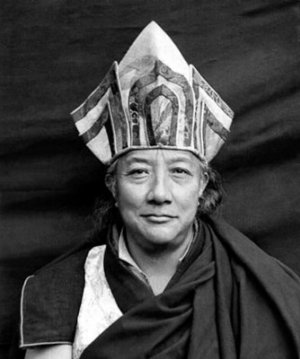| Library / Biographies |
Mahāsi Sayādaw Biography

Mahasi SayadawU Sobhana was born in 1904 in Seikkhun village in Upper Burma. His parents, U Kan Taw and Daw Oke were peasants.
He received an early monastic education starting at age six at Pyinmana Monastery at Seikkhun. At age twelve he became a samanera (novice) with the name Shin Sobhana (meaning Auspicious).
At age nineteen he had the options to return to a householder life or ordain. He chose the latter and became a bhikkhu1 on November 26th, 1923. In the next four years he passed the rigorous series of government examinations in the Theravāda Buddhist texts.
In 1931, U Sobhana took leave from teaching scriptural studies in Moulmein, South Burma, and went to nearby Thaton to practice intensive Vipassana satipaṭṭhāna 2 meditation under Mingun Jetawun Sayādaw (U Nārada).
This teacher had practiced in the remote Sagaing Hills of Upper Burma, under the guidance of Aletawya Sayādaw, a student of the forest meditation master Thelon Sayādaw. U Sobhāna first taught Vipassana meditation in his home village in 1938, at a monastery named for its massive drum 'Mahāsi'.
During the Japanese invasion of Burma in the Second World War, U Sobhana returned to his native village and devoted himself to the practice and teaching of satipaṭṭhāna vipassana meditation.
The Mahasi Monastery at Seikkhun (whence he became known as Mahasi Sayadaw) remained free from the horror and disruption of war. During this period, he wrote the “Manual of Vipassana Meditation”, an authoritative and comprehensive work expounding both the doctrinal and practical aspects of satipaṭṭhāna meditation.
In 1947, the Prime Minister of Burma, U Nu, invited Mahāsi Sayādaw to be resident teacher at a newly established meditation center in Yangon, which came to be called the Mahāsi Sāsana Yeiktha.

Mahasi Sayadaw in 1949In 1949 Sayadaw completed a new translation of the Mahāsatipaṭṭhāna Sutta and in December he personally instructed the first group of twenty-five meditators. Over time their number grew significantly, and a tape recorder was used for each new group after an introduction by Sayadaw.
During the Sixth Buddhist Council, which was attended by 2500 monastics and was held from Vesak (May 17th) 1954 to Vesak 1956 (May 24th), Mahāsi Sayādaw was a questioner and final editor.
The Council’s purpose was the editing of the commentaries, sub-commentaries and the canonical texts. In the editing, Mahasi Sayadaw was responsible for making a critical analysis, interpretation and reconciliation of different parts of the texts.
Mahāsi Sayādaw helped establish meditation centers all over Burma as well as in Sri Lanka, Indonesia, and Thailand. By 1972 the centers under his guidance had trained more than 700,000 meditators.
In 1979, he travelled to the West, holding retreats at newly founded centers such as the Insight Meditation Society in Barre, Massachusetts, U.S. In addition, meditators came from all over the world to practice at his center in Yangon.
When the Mahāsi Sayādaw died on 14 August 1982 following a massive stroke, thousands of devotees braved the torrential monsoon rains to pay their last respects.
Publications
• Sayadaw, Mahasi (1971): Satipatthana Vipassana Meditation.
• Sayadaw, Mahasi (1983): Thoughts on the Dharma.
• Sayadaw, Mahasi (1991): Practical Vipassana Exercises (PDF). Buddhist Publication Society.
• Sayadaw, Mahasi (1998): Progress of Insight: Treatise on Buddhist Satipathana Meditation. Buddhist Publication Society.
• Sayadaw, Mahasi (2016): Manual of Insight. Wisdom Publications.
Sources
• http://www.buddhanet.net/mahabio.htm
• https://en.wikipedia.org/wiki/Mahasi_Sayadaw
• https://www.lionsroar.com/who-was-mahasi-sayadaw/
• https://www.youtube.com/watch?v=qpm_MPiJ6XE&t=391s&ab_channel=MarirynPongpudpunth
Footnotes
1. A Bhikkhu (Pāli), or Bhiksu (Sanskrit), is a fully ordained male Buddhist monastic. Female monastics are called Bhikkhunis.
2. The practice of the four-fold satipaṭṭhāna, the establishing of awareness, was highly praised by the Buddha in the suttas. Mentioning its importance in the Mahāsatipaṭṭhāna Sutta (The Great Discourse on the Establishing of Awareness), the Buddha called it ekāyano maggo - the only way for the purification of beings, for overcoming sorrow, for extinguishing suffering, for walking on the path of truth and for realizing nibbāna (liberation, sk. nirvāṇa).





